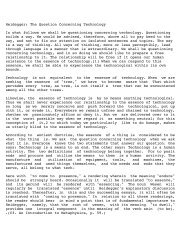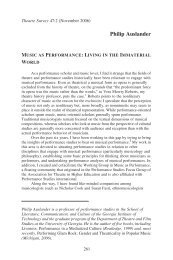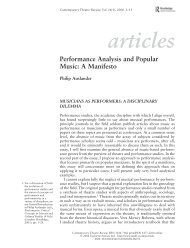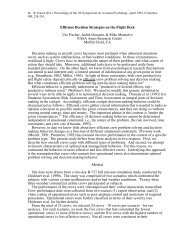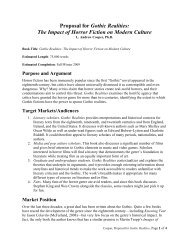INTERACTION DESIGN PRINCIPLES FOR INTERACTIVE ...
INTERACTION DESIGN PRINCIPLES FOR INTERACTIVE ...
INTERACTION DESIGN PRINCIPLES FOR INTERACTIVE ...
Create successful ePaper yourself
Turn your PDF publications into a flip-book with our unique Google optimized e-Paper software.
In Robert Miller’s classic user research test, where he looked at the effects of<br />
different response times with computer systems on users, he found that, on average:<br />
Less than 0.1 second response time for people to feel that the system is<br />
reacting instantaneously and to feel that they are directly manipulating events<br />
Less than 1 second response time, for users’ thought processes to remain<br />
uninterrupted<br />
Less than about a ten-second response time for users to keep their attention<br />
Source: Gawlinski, 2003.<br />
Furthermore, the navigational elements and the feedback from the system should<br />
be consistent and predictable. This means that all selectable elements should react in the<br />
same manner and that the acoustic feedback (if any) should be consistent, as well. EPGs<br />
generally provide a good example for consistent feedback. Users know that if they select<br />
a program listing, for example, they will be able to access more detailed information<br />
about the selected program including a brief synopsis, show times, an option to record,<br />
etc.<br />
In Figure 5.44, an example from History IQ, users must drag-and-drop the<br />
headline from the box on the left into the corresponding year that they think it belongs to.<br />
In this interface, color cues indicate whether the events are matched with the right or<br />
wrong years. Once it has been dragged into a time slot, the content turns red or green to<br />
indicate right or wrong, using a cultural model that we are familiar with and providing<br />
users with instantaneous feedback on whether they have acted correctly.<br />
168



